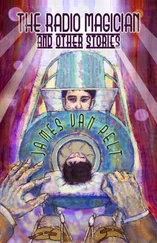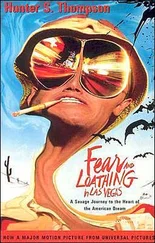So, I took the first tour of the day down to the observation deck. What I wanted were questions about how the ancients who left their mark on the airless surface traveled, how they achieved so much in metallurgy and physics without the benefit of groupmeld or infinitely researchable infoquarries. What I wanted were questions about their thinking, about their spirits, and if I thought remnants of the dead lingered, but tourists never asked interesting questions. They came to see the remnants and to abuse the skin shells, and then they left. None of them stayed long enough to learn who I was, and I didn’t care about them. It’s lonely work.
These ancients were first tier primitives, discovering everything on their own, scrambling out of an impressive gravity well in canisters designed to carry the conditions their unmalleable bodies could tolerate. A truly impressive achievement, and although they have long since disappeared, they left footprints in the dust, and their machines mark the possibilities of persistent sentience.
Instead, the dilettantes spent a desultory hour touching each other, stumbling into walls, mangling the language, and occasionally shrieking just to see how much volume the vocal chords could manage. Hard to believe these were the masters of the universe. One, though, a dark-haired woman who had been coming to the lectures for weeks, hearing the same presentations over and over, stood almost comatose on the edge. As always, she caught my attention with stillness. The first time I saw her, I thought that the port hadn’t taken and the body was unoccupied, but she had moved away from a loud man who pulled at his lip, then laughed when it slapped against his teeth.
Ignoring tourist boorishness is easy, though. Except for the dark-haired woman who evidently had decided to be a permanent resident, they come and go. The gallery remains, like the footprints themselves.
I like the set up. In the morning, the perfectly clear floor hangs an inch above the airless surface, exactly duplicating the impressions in the dust, so the customers can study the several million-year old footprints up close. A couple hours later, the observation area is drawn thirty feet up to give a panorama. The ancient landing vessel rests on its four feet, surrounded by the detritus of the expedition. I explain what each piece is for customers who want the full experience of wearing the skin shells. Instead of shooting the info straight into their storage centers, I tell how the main ship they see is just a landing stage, that the primitive explorers detached a second vessel to blast their way back to a meeting with orbiting transport, where the explorers abandoned the second ship to go home.
This took some explaining, and most of the tourists would port the facts later, once they figured out that “listening” to information, and then trying to process the audible signals was an incredibly tedious way to learn anything.
But they wanted the experience. At least that’s what they said.
The vices, though, caught most of their attention. Some drugs, for example, altered the shell’s perceptions in interesting ways. Eating, for others, entertained them for hours, particularly spicy foods or sweets. Part of my job involved purging the skin shells of the unnecessary calories and then exercising them remotely to maintain muscle tone after the tenants evacuated. And, naturally, most of the tourists grew interested in sexual possibilities. Since I had been wearing my skin shell for several years, and had become comfortable in it, tourists often approached me for help.
One of the women shells caught me after the morning tour, a red-haired model, a bit shorter than me. I had, while becoming acquainted with my skin shell in the first months, experimented with its sexual possibilities quite often. This red-haired one hadn’t been a favorite. They all feel slightly different, although, who is animating the skin is more interesting than the skin itself. As stimulating as sex in these shells can be, the personality interaction makes the encounter.
Red Hair said, “I’m only here for a few days, and the rest of my tour group is clumsy in this form, but I hear that procreation activities can be quite pleasant if you’re with someone who knows what they are doing. I have an hour before the next presentation. Would you mind helping?”
See what I mean?
I begged off without explaining to her that if she wanted real authenticity in her skin shell that she should wear the clothes we provided instead of running around the center naked.
After I’d given the second tour of the day, the overview, where I talked to the group about human explorations, and the short, sad history of their species, I went to the observation deck alone. All we had for information about the old explorers came from their space probes and the scattering of landing sites we’d found on what had been their home planet’s moon, but we were able to extract quite a bit about them, including their genetic information that we used to create the shells. Of course, it helped that they were aware enough of space’s preserving qualities to include information about themselves in their probes, but we also could deduce quite a bit by their tracks. They’re eagerness to send records about themselves into the unknown puzzled me for a long time. No other long-dead species whose remnants litter the surface of airless orbs attached plaques or audio records or visual images of themselves. It’s almost as if they knew they couldn’t last. The urgency that pushed them to explore also cut them short. Their energy turned in, turned on them, ending their brief history before it properly started.
The supporting frame for the center gave us flexibility. Two beautiful arches crossed above the landing site from which the viewing deck dangled, allowing me to position the observatory wherever I liked. I moved to the spot directly over the landing craft. With the sun near the horizon, the ancient mess of footprints around the craft stood in sharp relief. Every part of their expedition was written in the dust. We had reconstructed their entire stay: which footprints were first, which explorer made each print, where they went and what they uncovered. They didn’t wander far and they missed more than they found. Evidently they hoped to discover water on their moon, but they went around one of the many craters with ice at the bottom. From where I stood, I could see a line of tracks that bypassed the site. They wondered if they were alone in the universe, but, improbably enough, they just missed finding a mining facility that a much older space-faring species had left, invisible from above, but obvious from the surface. The ridge that hid the evidence from them cast its long shadow almost to the lander’s feet.
A voice startled me.
“Do you think,” said the dark-haired tourist who I thought was inanimate earlier, “that their civilization was doomed because they lived on a double planet?” I hadn’t heard her come into the room. She had never spoken before.
Like many of the tourists, she didn’t wear shoes. Many of them say they want an authentic experience, but they won’t play the part. Her hands were clasped behind her back as she studied the lander below. “I mean, what other species grew up with a monstrosity of a moon like this in their sky? Do you think they felt how it tugged them around?”
She didn’t look at me as she waited for an answer.
“They wouldn’t sense the gravity. It would just be a part of what they knew.” I wondered why she had been silent for so long and why she decided to speak now.
“But it would be huge in their sky. Look at the planet itself.” She glanced up. The home world, its features obscured by the opaque atmosphere, half in the sun and half dark, hovered above. “When they lived on the surface, the air was clear, you said. Wouldn’t they see the moon? Wouldn’t they fear that it would crush them?”
Читать дальше










